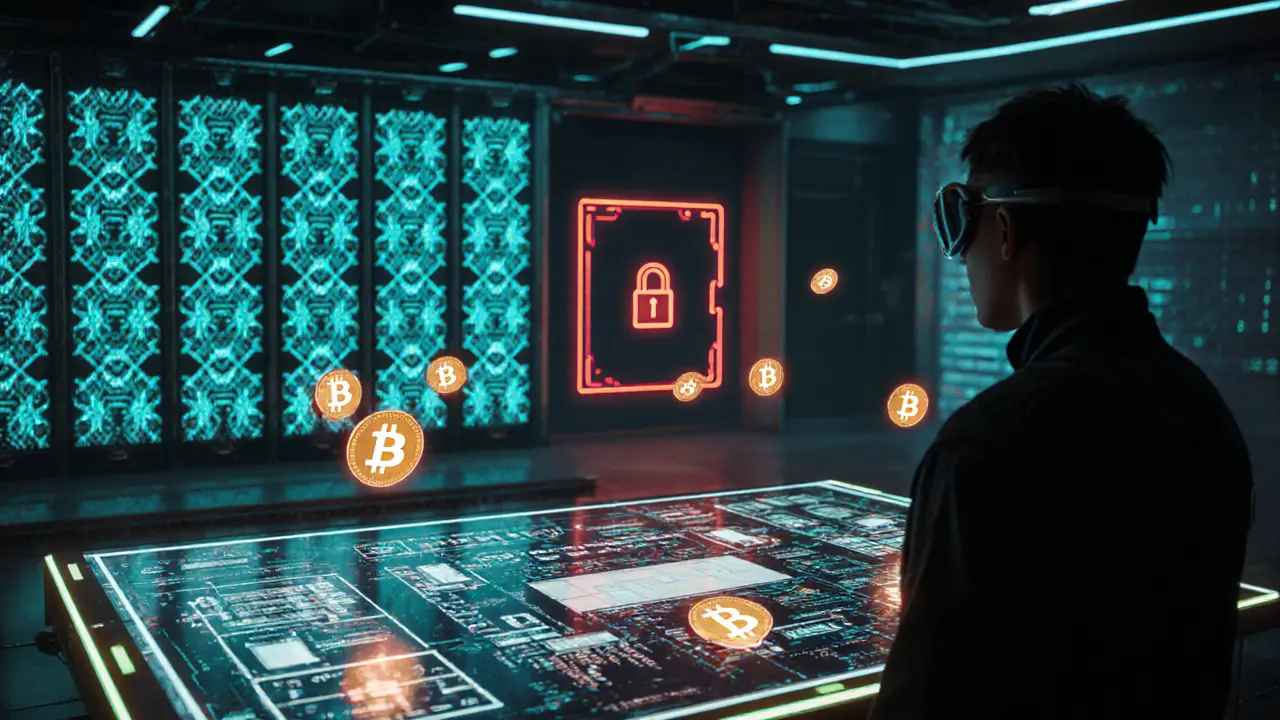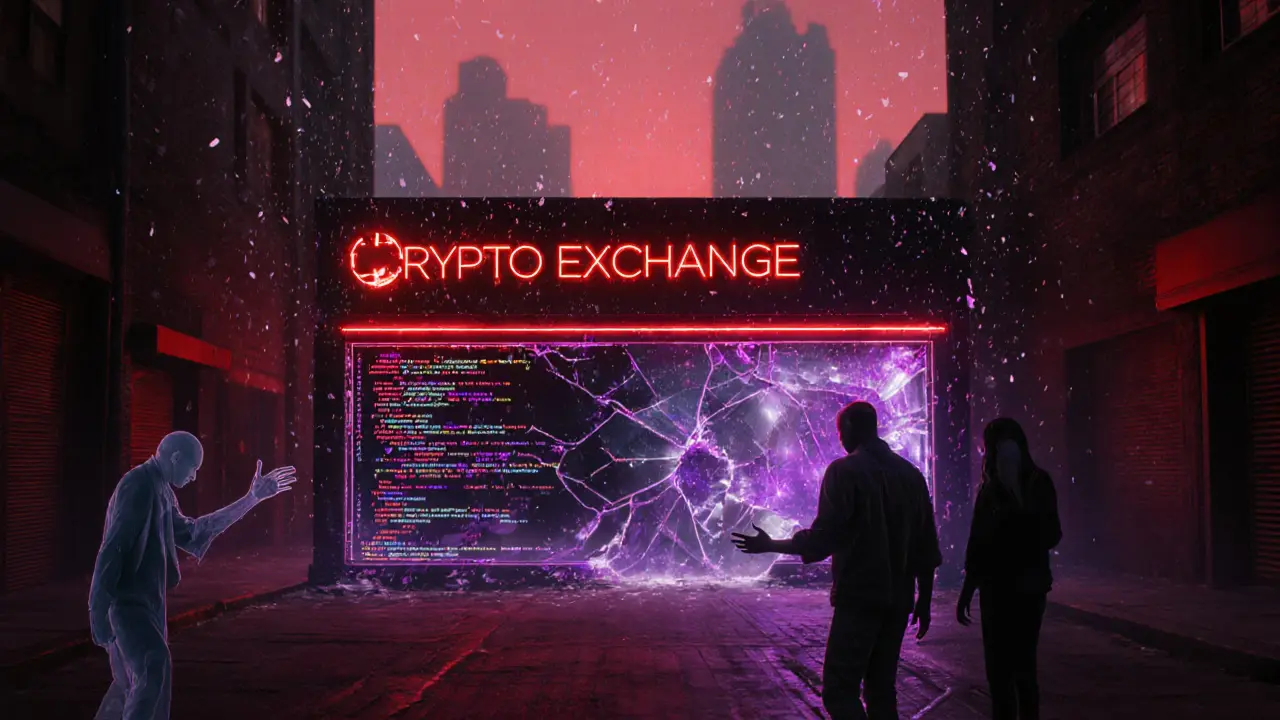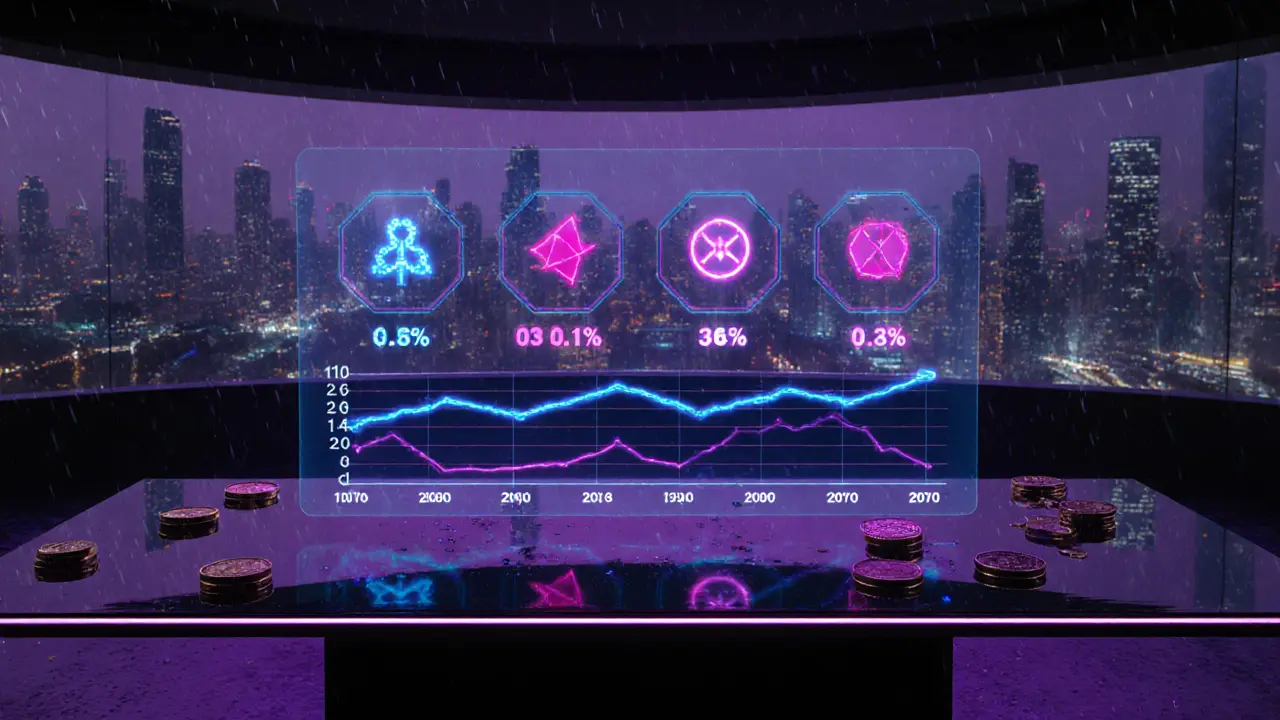CoinField vs. Other Exchanges Fee Comparison
CoinField charged 0.15% maker and 0.25% taker fees. Compare this to industry leaders below:
| Exchange | Supported Cryptos | Maker Fee | Taker Fee | Fiat Support | Unique Feature |
|---|---|---|---|---|---|
| CoinField | 28 | 0.15% | 0.25% | 6 | SOLO token card |
| Binance | 400+ | 0.02% (VIP tiers) | 0.04% (VIP tiers) | 20+ | Launchpad, Staking |
| Kraken | 150+ | 0.16% | 0.26% | 15 | Futures, Margin |
| FameEX | Unknown | 0.10% | 0.10% | 5 | Low‑fee focus |
Estimate your trading costs on CoinField:
CoinField ceased operations in December 2023 and is now considered a scam. Users lost access to funds and support. Always choose regulated exchanges with transparency and security audits.
- Verify licensing and regulatory status
- Prefer platforms with third-party security audits
- Never store large sums on an exchange
- Check community feedback before depositing
- Stay alert to sudden policy changes
CoinField is a cryptocurrency exchange that launched in January 2018, originally marketed as a Canadian‑based platform offering crypto‑to‑fiat trading. It promised a sleek web interface, a mobile app called CoinField Pro, and a proprietary SOLO token that could be spent via a plastic card. Early users liked the low‑fee structure, but by late 2023 the exchange stopped processing withdrawals and was labeled a scam by several watchdogs.
Key Takeaways
- CoinField’s maker/taker fees sit at 0.15% / 0.25%, slightly higher than the industry low‑fee leaders.
- Security features include KYC, AML checks and optional two‑factor authentication, yet they didn’t stop the platform’s collapse.
- Since December 2023, users report locked funds, missing support, and an "exit‑scam" classification by Cryptowisser.
- The exchange supported 28 cryptocurrencies, among them Bitcoin, Ethereum, Litecoin, Ripple and Tether.
- Potential investors should steer clear and consider vetted alternatives.
Platform Overview
The CoinField dashboard was built around a simple “Buy‑Sell” tab, a “Convert” tool, and a “Pro” view for advanced charting. Users could deposit as low as 0.004BTC (or equivalent) to start trading. The exchange accepted six fiat currencies, allowing direct crypto‑fiat pairs without needing a third‑party gateway. While the site claimed 24/7 ticket‑based support, real‑time chat or phone lines never materialised.
In terms of product range, the platform listed 28 assets, ranging from flagship coins like Bitcoin and Ethereum to newer tokens such as ZRX, OMG, and BAT. The inclusion of the SOLO token was a unique selling point: holders could load the token onto a prepaid card for offline purchases, a feature rarely seen on crypto exchanges.
Fees & Trading Costs
CoinField operated a tiered fee schedule common to many exchanges. Makers - traders adding liquidity - paid 0.15% per trade, while takers - those removing liquidity - were charged 0.25%. Bitcoin withdrawals cost a flat 0.0015BTC, roughly $40 at current rates. Compared with major players, those fees sit in the middle of the market. Below is a quick snapshot.
| Exchange | Supported Cryptos | Maker Fee | Taker Fee | Fiat Support | Unique Feature |
|---|---|---|---|---|---|
| CoinField | 28 | 0.15% | 0.25% | 6 | SOLO token card |
| Binance | 400+ | 0.02% (VIP tiers) | 0.04% (VIP tiers) | 20+ | Launchpad, Staking |
| Kraken | 150+ | 0.16% | 0.26% | 15 | Futures, Margin |
| FameEX | Unknown | 0.10% | 0.10% | 5 | Low‑fee focus |
The fee structure alone doesn’t justify the platform’s later downfall, but it does show that CoinField tried to stay competitive on price while differentiating through its token ecosystem.

Security, Compliance & KYC
From a compliance standpoint, CoinField implemented standard KYC (Know Your Customer) and AML (Anti‑Money Laundering) checks. During signup, users uploaded government‑issued ID, a selfie, and proof of residence. The platform also offered optional two‑factor authentication (2FA) via authenticator apps. While these measures meet European‑style regulatory expectations, they proved insufficient when the exchange ceased operations; no escrow or insurance was in place to protect user funds.
Security experts praised the use of encryption for data transmission, yet the exchange never released a public audit of its hot‑wallet management. This opacity became a red flag when withdrawals stalled, as there was no third‑party verification that the assets were actually held.
User Experience & Support Challenges
Initial reviews praised the intuitive UI and fast order execution. New users could sign up, verify, and start trading within 15minutes. However, as traffic grew, complaints about lagging charts and occasional “Error 522” gateway timeouts surfaced. The support model relied on a ticketing system, with typical response times ranging from 24hours to several days.
Community sentiment shifted dramatically in late 2023. Posts on Reviews.io show a rating drop to 2.5/5 after users reported locked accounts and months‑long withdrawal delays. The most damning evidence came from independent monitors who captured screenshots of the CoinField site displaying the “Error 522” message, indicating server overload or a complete shutdown.
Scam Warning & Current Status
In December2023, Cryptowisser officially moved CoinField to its "Exchange Graveyard" after receiving multiple complaints about unprocessed withdrawals and silent support channels. The platform’s executives, Surya Chowdhury and Alex Lightman, have not publicly addressed the crisis. Some users claimed a sudden redirection to a domain called "coinfield.us.com," but those accounts lack verification and may be phishing attempts.
Regulatory bodies in Canada and several European jurisdictions have opened investigations, but recovery prospects are bleak. Historical patterns from similar collapses (e.g., QuadrigaCX, FTX) suggest that unless the owners voluntarily return funds or court orders intervene, users are unlikely to see their assets restored.
How to Protect Yourself When Choosing an Exchange
- Verify licensing and regulatory status. Look for clear registration numbers and compliance reports.
- Prefer platforms that publish third‑party security audits and proof‑of‑reserves.
- Never store large sums on an exchange; use hardware wallets for long‑term holdings.
- Check community feedback on sites like Reviews.io and Trustpilot before depositing.
- Stay alert to sudden changes in withdrawal policies or support responsiveness.
Applying these checkpoints can help you avoid the pitfalls that befell CoinField users.

Frequently Asked Questions
Is CoinField still operating?
No. As of December2023, CoinField stopped processing withdrawals and was listed as a scam by major reviewers. The website now shows error messages, and authorities are investigating.
Can I still recover my funds?
Recovery chances are low. Some users have filed legal claims, but without a clear asset audit, most funds remain inaccessible.
What were CoinField’s fees compared to other exchanges?
CoinField charged 0.15% maker and 0.25% taker fees. This is higher than low‑fee leaders like Binance (0.02%/0.04% for VIP users) but lower than some mid‑tier platforms that charge 0.25% both ways.
Did CoinField offer leverage trading?
Sources conflict. Early documentation claimed no leverage, while later promotional material hinted at up to 100x. The inconsistency contributed to user confusion.
Are there safer alternatives for crypto‑fiat trading?
Yes. Exchanges like Kraken, Coinbase, and Binance have transparent compliance, regular security audits, and active support channels. Always conduct due diligence before depositing.

Rajini N
September 11, 2025 AT 05:45Even though CoinField’s fees looked decent at 0.15% maker and 0.25% taker, the real cost is losing access to your funds when the platform vanished. It’s a reminder that security and regulatory compliance should always outrank low fees. Make sure to research a exchange’s licensing and audit reports before you deposit anything.
Jason Brittin
September 12, 2025 AT 00:49Oh sure, “mid‑tier fees” are the new selling point-because who cares about a platform that just disappears? 🙄💸
Kate Nicholls
September 12, 2025 AT 19:53Calling it a “mid‑tier” fee is a generous spin when the exchange itself turned out to be a scam. The community deserved better transparency from the start.
Ben Dwyer
September 13, 2025 AT 14:57You’ve hit the nail on the head. It’s painful to see such warnings come after people have already lost money.
Michael Wilkinson
September 14, 2025 AT 10:01Anyone still considering CoinField after the December 2023 collapse needs to get their facts straight-no amount of low fees justifies a platform without proper licensing.
Billy Krzemien
September 15, 2025 AT 05:05Exactly, the lack of a clear regulatory framework was a huge red flag. Future investors should prioritize exchanges that publish third‑party audit results and maintain a robust insurance fund.
april harper
September 16, 2025 AT 00:09In the grand tapestry of finance, every promise of easy profit is a thread that can unravel, leaving us to question what truly anchors our trust.
Clint Barnett
September 16, 2025 AT 19:13When you stare at the glossy marketing banners of a crypto exchange, it’s easy to be dazzled by the promise of low fees and instant swaps, yet beneath that veneer often lies a labyrinth of unchecked risk and regulatory blind spots. The CoinField saga is a textbook example of how a seemingly legitimate service can vanish overnight, taking users’ hard‑earned capital with it. First, the exchange advertised a modest 0.15% maker fee, positioning itself as a competitor to the giants like Binance and Kraken, which in turn attracted traders looking to shave a few basis points off their trades. However, the allure of such competitive pricing quickly faded when users discovered that the platform lacked any tangible licensing from recognized financial authorities. This omission is not merely a bureaucratic oversight; it signals a profound absence of oversight, which should raise alarms for even the most casual investor. Moreover, the security architecture of CoinField was never subjected to third‑party audits, leaving its custodial practices shrouded in secrecy. As the saying goes, “if you can’t see it, you can’t protect it,” a principle that applies squarely to digital assets stored on unverified platforms. When the exchange collapsed in December 2023, users were left scrambling to retrieve funds that were effectively locked behind a closed gate. The fallout was not just financial; it damaged confidence in the broader crypto ecosystem, reinforcing the narrative that regulation is essential for trust. In contrast, exchanges that embrace transparency-publishing audit reports, holding insurance policies, and maintaining clear jurisdictional compliance-offer a safety net that can absorb market turbulence. The lesson here is clear: fees are a secondary consideration to the security of your holdings. Even a marginally higher taker fee on a regulated exchange can be a worthwhile expense if it preserves your assets. For newcomers, the mantra should be “Do your due diligence before you dive in,” which includes checking the exchange’s registration, reading community feedback, and verifying the existence of a robust cold‑wallet strategy. Finally, remember that the crypto market rewards patience and prudence more than the hype of cheap trades. By prioritizing security over vanity pricing, you safeguard not only your capital but also the integrity of the entire crypto community. Stay vigilant, and let your crypto journey be guided by safety first.
Oreoluwa Towoju
September 17, 2025 AT 14:17Did they ever provide any insurance for user funds?
Amie Wilensky
September 18, 2025 AT 09:21Honestly, the whole CoinField episode-, with its unregulated status, , lack of third‑party audits, , and sudden disappearance-, serves as a cautionary tale, , especially for those chasing low‑fee deals, , that may be too good to be true.
MD Razu
September 19, 2025 AT 04:25When you evaluate a platform, the first metric should be its compliance posture, not merely the headline fee percentages; aggressive marketing can mask systemic weaknesses, and users who ignore the red flags often end up paying the ultimate price-lost capital, eroded trust, and a lingering sense of betrayal that ripples through the community. Therefore, a diligent approach that cross‑checks licensing, verifies security audits, and scrutinizes the exchange’s operational transparency is non‑negotiable, especially in an environment where regulatory gray zones are abundant.
Charles Banks Jr.
September 19, 2025 AT 23:29Sure, “mid‑tier fees” are the new gold standard-said no one who lost their crypto.
Katrinka Scribner
September 20, 2025 AT 18:33i love that we finally got the heads up 🙃 but dang it feels like i missed the boat, hope everyone learns from this 😅
Naomi Snelling
September 21, 2025 AT 13:37What if the whole collapse was orchestrated by big players to weed out competition and consolidate power?
Jacob Anderson
September 22, 2025 AT 08:41Another “lesson” in crypto-trust the hype until it burns your wallet.
Carl Robertson
September 23, 2025 AT 03:45Watching CoinField implode was like seeing a house of cards tumble in slow motion; the drama unfolded across forums, whispers turned into sirens, and the collective sigh of the community echoed the disillusionment of countless investors. The toxic undercurrents of unchecked ambition and greed manifested in a cascade of blame, with each blame‑shifter trying to absolve themselves while pointing fingers at the next. In the end, the silence of the dead platform spoke louder than any apology could.
Kate Roberge
September 23, 2025 AT 22:49Honestly, I think the hype was the real victim here-people were more scared of losing a chance than actually losing money.
Lindsay Miller
September 24, 2025 AT 17:53It’s tough to see anyone lose their savings; if you’re still looking for a safe place, stick with exchanges that publish clear audit reports and have a solid reputation.
VICKIE MALBRUE
September 25, 2025 AT 12:57Stay hopeful and keep learning.